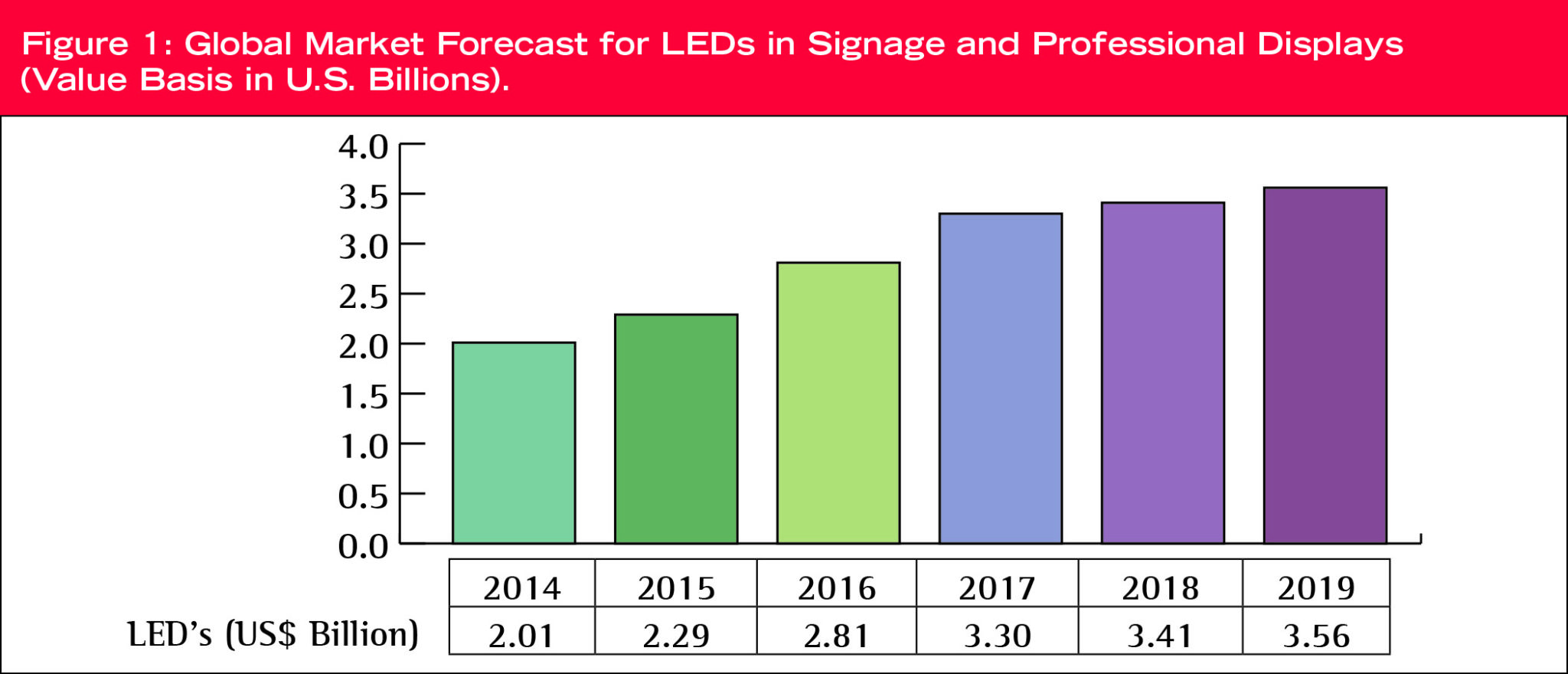By Stephen Montgomery
Market research shows the value of light-emitting diodes (LEDs) used in signage and professional displays around the world reached nearly $2.3 billion U.S. in 2015, up from just over $2 billion in 2014, and this market is forecast to grow to nearly $3.6 billion in 2019. (And these forecasts refer to consumption within a particular calendar year; they do not represent cumulative data.)
The sheer growth of the LED industry, however, is only part of the story, behind which is the customization of various LED products for specific purposes.
Packaging LEDs
LEDs can be segmented by the following package types: dual in-line package (DIP), surface-mount diode (SMD) and chip-on-board (COB). As well, how these packages are used in the sign and display industry can be segmented into the following applications: digital signage, backlit channel letters/boxes and backlit professional-grade liquid crystal displays (LCDs).
The consumption value of DIP LEDs is forecast to increase by more than 20 per cent each year, SMC LEDs are expected to see negative growth and, most notably, COB and multiple-COB (MCOB) LEDs are set to grow by nearly 180 per cent per year through 2019.
The use of COB and MCOB LEDs in signage and display applications is relatively new. They are typically specified for general illumination purposes instead—and, indeed, many ongoing evaluations of LEDs focus on their potential to displace traditional light bulbs in architectural applications—but as their true value proposition is recognized, they are also finding their way into channel letters, sign panels, backlit LCDs and box signs. There are also research and development (R&D) efforts aiming to introduce them into digital signage display applications.
The worldwide consumption of DIP LEDs was expected to reach nearly $760 million U.S. in 2015. All DIPs are single-colour, but when they are used in digital boards, they are often placed in ‘blocks,’ such that each block accommodates two or three colours.
SMD LEDs carry a much higher selling price than DIPs. In 2015, they held a leadership position in the global marketplace with 62 per cent of consumption value, whereas DIPs were dominant in terms of volume (quantity). It is important to note both SMD and COB LEDs are often multiple-chip products, bringing red, green and blue (RGB) together. Market research counts each multiple-chip product as one LED, not three.
Options and advantages
LED lighting offers an array of options and advantages for illuminating signs. The latest high-brightness LEDs (HB-LEDs) are low-voltage and energy-efficient; they can operate with low running costs. LEDs also offer increased longevity compared to traditional forms of sign illumination, so they can reduce maintenance costs.
LEDs can be used for back- or front-lighting metallic or acrylic sign letters for bright faces or halo-illuminate them for a subtler effect. They can also be used to edge-light acrylic panels, which in turn can be used independently as light sheets and walls or integrated into aluminum frames to create ultra-thin lightboxes.
Today, LEDs are installed in everything from dynamic building façades, gigantic outdoor video screens, digital billboards and stadium scoreboards to indoor retail displays, menu boards, destination signs in transit vehicles and backlit LCDs. The following are just a few examples of how they are being used today throughout the sign and display industry.







